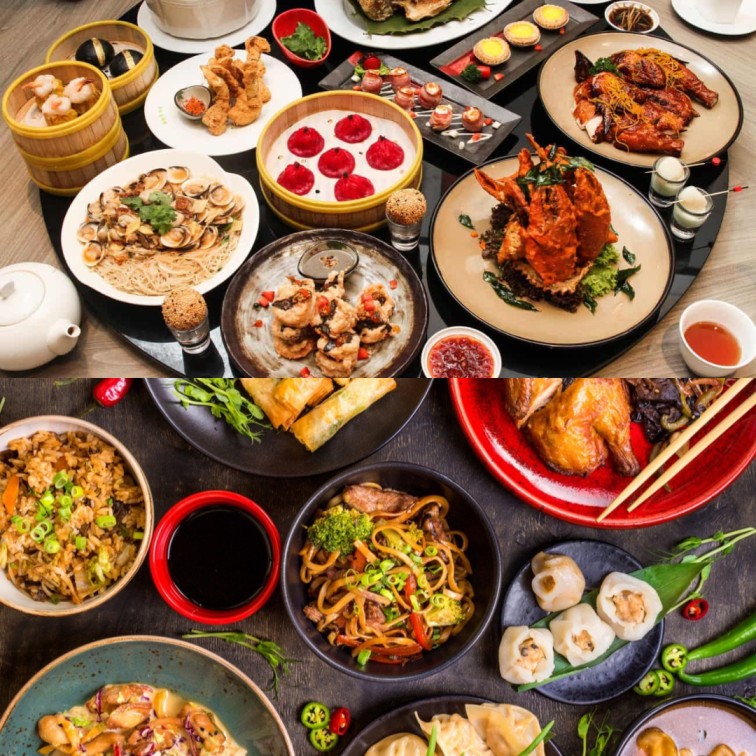Chinese food is about balance—between flavors, textures, colors, and the principles of Yin and Yang.
.China, with its vast landscapes and over 5,000 years of history, boasts one of the most sophisticated and diverse culinary cultures in the world. From the snow-capped mountains of the north to the lush rice paddies of the south, every region has contributed its own unique flavors and traditions to what is now known globally as Chinese cuisine.
At its heart, Chinese food is about balance—between flavors, textures, colors, and the principles of Yin and Yang. Whether it’s the numbing heat of Sichuan peppercorns or the delicate aroma of jasmine-infused tea, every dish tells a story of the people, geography, and philosophy behind it.
In this article, we explore some of the most iconic and beloved dishes that have not only defined the Chinese culinary landscape but also gained international acclaim.
1. Peking Duck : A Taste of Imperial Beijing
Peking Duck is one of China’s most celebrated dishes, originating from the imperial kitchens of the Yuan Dynasty and perfected over centuries. This dish is prized for its crispy, lacquered skin and tender, aromatic meat. The duck is traditionally roasted in a wood-fired oven and carved tableside by skilled chefs.
Served with paper-thin pancakes, scallions, cucumber, and a savory-sweet hoisin sauce, diners wrap slices of duck in the pancake like a delicate parcel. Beyond its flavor, Peking Duck is a culinary art form—symbolizing luxury, hospitality, and centuries of royal dining tradition.
2. Dim Sum : Small Bites, Big Culture
Dim sum, which means “touch the heart,” originated from the tea houses of southern China, particularly in Guangdong province. What began as light snacks for travelers along the Silk Road evolved into a beloved brunch ritual.
A typical dim sum experience includes an assortment of steamed dumplings, fluffy buns, crispy spring rolls, and rice noodle rolls, served in small bamboo steamers. Dishes like Har Gow (shrimp dumplings), Siu Mai (pork dumplings), and Char Siu Bao (barbecue pork buns) are staples. Dim sum is traditionally enjoyed with Chinese tea, making it a social and leisurely meal that brings families and friends together.
3. Kung Pao Chicken : Fiery Flavors from Sichuan
Hailing from the southwestern province of Sichuan, Kung Pao Chicken is a bold and spicy stir-fry made with diced chicken, dried red chilies, peanuts, garlic, and the distinctive Sichuan peppercorns that create a tingling sensation known as málà.
This dish is not just about heat—it’s a symphony of flavors: sweet, sour, salty, spicy, and numbing. Named after a Qing Dynasty official, Ding Baozhen (also known as “Kung Pao”), the dish has evolved into numerous regional and international variations, but the original remains a fiery favorite among spice lovers.
4. Sweet and Sour Pork: A Crowd-Pleasing Classic
With its vibrant red-orange glaze and balance of tangy sweetness, Sweet and Sour Pork is one of the most recognizable Chinese dishes globally. Originally from Cantonese cuisine, the dish features deep-fried pork tenderloin coated in a sauce made from vinegar, sugar, and tomato paste or ketchup, often garnished with pineapple, bell peppers, and onions.
Though some might see it as Westernized, its roots run deep in Chinese culinary tradition. It’s a dish that appeals to all ages, making it a staple at both family dinners and restaurant tables worldwide.
5. Hot Pot : A Communal Feast
Hot Pot isn’t just a dish—it’s an experience. Popular across China, particularly in Sichuan and Chongqing, hot pot involves a simmering pot of flavorful broth at the center of the table. Diners cook raw ingredients such as thinly sliced beef, lamb, mushrooms, tofu, and leafy greens in the broth.
What sets Sichuan hot pot apart is its spicy, oily broth infused with chili peppers and peppercorns. Other regions offer milder versions, such as mushroom or tomato-based broths. Dipping sauces made with sesame oil, garlic, and soy sauce allow for further customization. Hot pot is the embodiment of warmth, sharing, and culinary creativity.
6. Mapo Tofu : Comfort Food with a Kick
Mapo Tofu is a Sichuan classic that combines silky tofu with minced pork (or beef) in a spicy, bean-based sauce. The hallmark of this dish is its intense aroma and the málà sensation from the Sichuan peppercorns.
The dish was created by a Chengdu woman known as “Mapo” (which means “pockmarked old woman”) who ran a small restaurant in the 19th century. Today, her legacy lives on in this deeply satisfying dish that brings heat, flavor, and comfort in every bite.
7. Fried Rice : The Quintessential Comfort Dish
Fried rice is perhaps the most versatile and universal of all Chinese dishes. Whether it’s a simple combination of eggs and scallions or a luxurious version with shrimp, BBQ pork, and vegetables, fried rice is the ultimate way to turn leftovers into a complete, flavorful meal.
The Yangzhou-style fried rice is particularly famous, known for its fragrant rice, carefully diced ingredients, and balance of color and texture. In Chinese households, it’s a quick solution to weekday meals and a symbol of culinary thrift and creativity.
8. Jiaozi : Dumplings of Prosperity
Jiaozi are Chinese dumplings filled with ground meat and vegetables, usually served boiled, steamed, or pan-fried. They’re a staple during the Lunar New Year, believed to bring wealth due to their resemblance to ancient gold ingots.
Families often gather to make jiaozi together, sharing stories and folding dumplings as part of a cherished tradition. Whether dipped in black vinegar, soy sauce, or chili oil, jiaozi are as much about community and heritage as they are about taste.

9. Xiaolongbao : Soup-Filled Delicacies
These delicate soup dumplings, originating from Shanghai and the Jiangnan region, are filled with seasoned pork and gelatinized broth that turns to liquid when steamed. Eating xiaolongbao requires a bit of skill—bite the top, slurp the soup, then enjoy the rest.
Their thin, translucent skins and flavorful filling have made xiaolongbao a favorite in dim sum restaurants and food festivals around the world. They are the perfect marriage of culinary technique and indulgent flavor.
10. Chow Mein : Stir-Fried Noodles Loved Worldwide
Chow Mein, meaning “fried noodles,” is a dish that has countless variations across China and beyond. From the thin, crispy Cantonese version to the soft, saucy northern-style noodles, chow mein is endlessly adaptable.
Typically stir-fried with vegetables, soy sauce, and your choice of protein, it’s a dish that speaks to the simplicity and flexibility of Chinese cooking. It’s no surprise that chow mein has become a comfort food staple in Chinese takeouts around the world.
Conclusion: A World of Flavor in Every Dish
Chinese food is more than just sustenance—it’s a reflection of the country’s history, philosophy, and sense of community. Each dish represents a piece of China’s regional identity, shaped by local ingredients, traditions, and climates. Whether you’re savoring the rich, spicy flavors of Sichuan, the light elegance of Cantonese cuisine, or the hearty staples of the north, there’s always more to discover.
As Chinese cuisine continues to influence and inspire chefs and food lovers globally, its core values—balance, harmony, and respect for tradition—remain unchanged. In every bite of Chinese food, you taste not just flavor, but a story that spans centuries.








